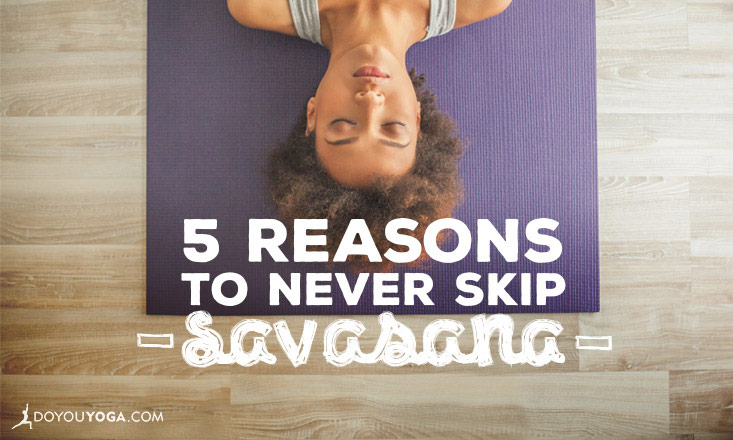Savasana, the Corpse Pose. Hmmm, the name may sound a little grim, but the whole corpse thing just describes how a person should be during relaxation: as still as a corpse.
Okay fine, even with that explanation, it still sounds grim. But trust me, we really do need those small periods of stillness at the end of class to absorb the benefits of all the more challenging postures we have done; not to mention the need to balance out the incessant activity of our busy, dynamic lives.
Quiet Body, Quiet Mind
As the sutra of Patanjali teaches, "Yogash chitta vritti nirodhaha," or "stilling the patterns of the mind is yoga." Making time for Savasana will help you to find space for stillness in your practice.
Have you ever tried to “relax” by taking bath or having a massage, only to be mentally sifting through your to do list, worries, or ideas at break neck speed? If you’re anything like me, you’ll likely have left some of those “relaxing” experiences more wound up than when you went in.
Physically, Savasana is an uncomplicated pose; however that simplicity doesn’t mean it’s easy. ~Anna Coventry
In fact, it can actually be the most challenging pose of all. That’s because our entire lives are made up of activity. We are always on the move, and even when we’re sitting still, the mind still whirls around.
Stillness of both body and mind is a very important aspect of Savasana, and it’s vital to reset and realign every aspect of ourselves at the end of a practice. I know, I know; it’s easy and tempting to drift and think about dinner, whether a parking ticket has expired, or whether someone brought the washing in.
But trust me, those 5 to 10 minutes at the end of class are ridiculously important. Here’s why.
1. Relax the body.
Savasana is a gift to your body. It’s during this time that the physical body processes all the work you did during class and absorbs all the beautiful benefits of the asanas, of which there are SO many: It’s yoga’s version of a bubble bath. Do I really need to go on?
2. Balance your nervous system.
Okay, now we’re getting a little more technical. Stay with me, because this point could change your world. The autonomic nervous system has 2 aspects: the sympathetic, which is the part that springs us in to action, and the parasympathetic, which is all about rest and relaxation.
Busy, stressful lives create an imbalance towards constant activity (i.e. the sympathetic nervous system leads the charge most of the time), but too much action can create stress and anxiety.
Therefore, it becomes super important to seek out periods of stillness so we can activate the parasympathetic nervous system leading us to relax, recharge and rejuvenate. And Savasana can do just that.
3. Find stillness.
Stillness has to be one of the most challenging things to a human being. That’s why we love practicing asana–because we get to move! It’s common to get restless and fidgety in Savasana; We smooth out our clothes, brush hair out of our eyes, and chase those pesky little itches around our bodies. That’s because we are so driven by activity and movement that stillness just seems so…. foreign.
Being still takes practice but when we find that stillness in the body, the mind starts to quieten down. Which segues nicely to my next point.
4. Rest the mind.
You’re a human being with a mind, so you’ll understand when I say the mind doesn't need ANY encouragement to move around. In fact, it’s natural tendency is to behave like a petulant and extremely busy monkey. It’s one of the reasons why we like to move so much, because we are led around all day by the busyness of our monkey mind.
But after asana, when the body is open and the energy is more balanced, the mind actually does find it easier to rest. And when the mind rests for a while, there comes a point where everything just goes quiet. A soothing, peaceful feeling descends, and that’s when magic can happen.
5. Practice for more challenging poses.
Let’s face it: It’s easier to slow the mind when we’re lying down on our back. But imagine if you could find that same sense of focus and calm while holding a standing pose or a tricky arm balance. You can actually, it just takes practice. And it all really starts with how we approach our Savasana.


